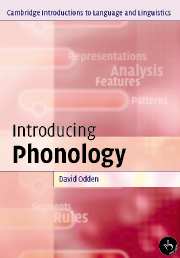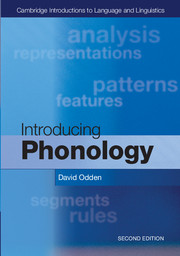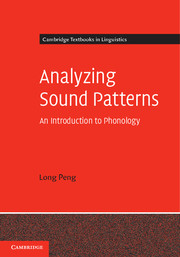Introducing Phonology
This accessible textbook provides a clear and practical introduction to phonology, the study of sound patterns in language. Designed for undergraduates with only a basic knowledge of linguistics, it logically develops the techniques of phonological analysis. Over sixty graded exercises encourage students to make their own analyses of phonological patterns and processes, based on extensive data and problem sets from a variety of languages.
- Accessibly written, assuming no prior knowledge of phonology or phonetics
- Equips students with the essential analytical skills needed for further study in phonology
- Contains over sixty graded exercises based on a variety of data, with further exercises, useful links and password protected solutions on the accompanying web site
Reviews & endorsements
'An excellent introduction to phonology. Difficult ideas are presented in an accessible manner - a plus for any textbook. It covers a variety of interesting phonological facts from typologically different languages. Using this text will acquaint students with the essence of theoretical concepts and phonological analyses.' Shosuke Haraguchi, Meikai University
'This book is a godsend for those of us in search for an introduction to phonology … Odden provides the entire package of tools and raw materials that the student needs.' Lee Bickmore, Program in Linguistics and Cognitive Science, Albany University
'Odden's book stands out among phonology textbooks thanks to its focus on data and analysis. … Students of phonology and phonetics would benefit … and will find … some explanations that are clearly better than those available elsewhere.' The Times Higher Education Supplement
Product details
March 2005Hardback
9780521826693
368 pages
254 × 179 × 30 mm
0.887kg
61 exercises
Replaced by 9780521534048
Table of Contents
- 1. What is phonology?
- 2. Phonetic transcriptions
- 3. Allophonic relations
- 4. Underlying representations
- 5. Interacting processes
- 6. Feature theory
- 7. Doing an analysis
- 8. Phonological typology and naturalness
- 9. Abstractness and psychological reality
- 10. Nonlinear representations.







